David Stairs
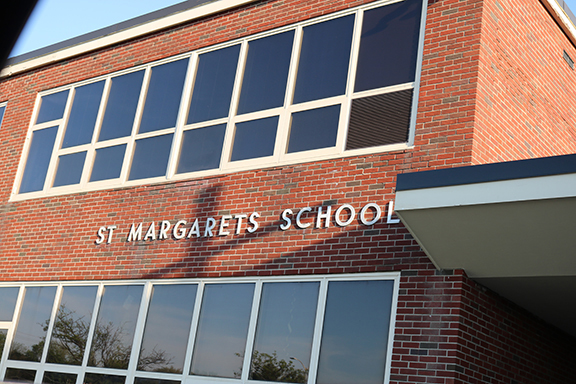
When Thomas McNeill was made pastor of St. Margaret’s parish in 1948, he inherited little more than a twenty-year-old mission church in a growing suburb north of Syracuse, New York. McNeill had been a Navy chaplain in the Pacific during the war, but his dream was to expand Catholic education, and he would devote the best years of his life to the work.

Thomas McNeill dedicated the latter part of his life to Catholic education.
In November 1952 my parents moved into their first and only home seven months after I was born, and one of the main reasons they settled where they did was the proximity to this nearby parish. My Mom was a fervent Catholic, and she was determined to make sure her devotion transferred to her children. She had my Father agree that we would be raised Catholic.
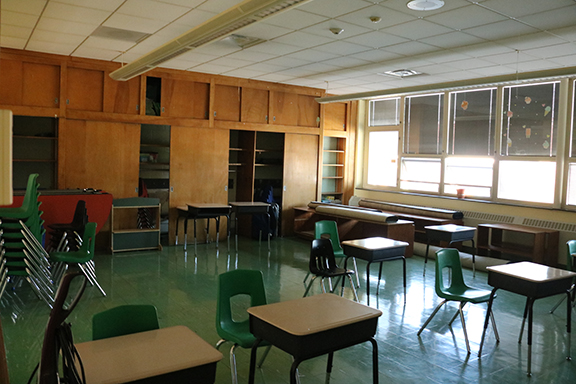
The building was well made. Note the hardwood closets.
When Father McNeill opened the first ten classrooms of St. Margaret’s grammar school in 1954 the post-war Baby Boom was well under way. That year, enrollment was 340, but this was only the tip of a dramatic surge that would occur within a decade. In 1958 St. Margaret’s laid the cornerstone of a middle school with another ten classrooms and, in 1960, built the largest gymnasium for miles around.
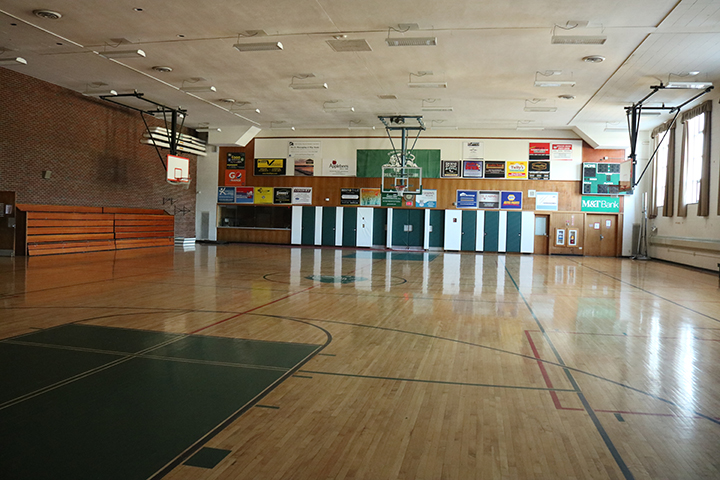
St. Margaret’s had the largest gym in its area.
I remember the annual reports, usually shared with the congregation at Sunday mass. The parish was deeply in debt, and congregants were exhorted to tithe a portion of their income to the parish. But by 1961 enrollment had ballooned to 1320 students, and St. Margaret’s was running classes for K thru 9 while a new Catholic high school was under construction elsewhere in the diocese. Catholic education was booming.
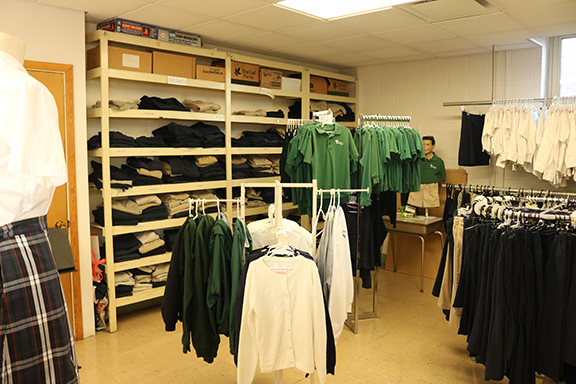
The school had a uniform room where student families could purchase or rent the required uniforms.
Class sizes were large. I remember always being in a homeroom of 45+ students, and this would have been universal to support such enrollment numbers. In the early years one woman, usually a teaching nun from the Order of St. Francis, or an occasional lay teacher, taught a class all subjects. Later, the teachers rotated in and out of the rooms, which eliminated what would have been utter chaos in the hallways. Corporal punishment was not unusual in such a crowded environment. We laugh now about the ruler across the hands stories, but such forms of control would never fly today.
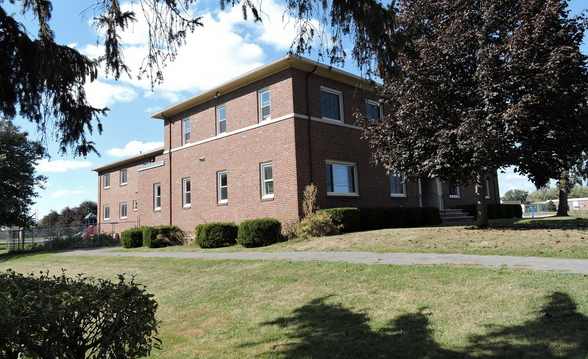
The former St. Margaret’s Convent.
To house the teaching nuns the parish built a large convent, sufficient for the needs of upwards of twenty women. The nuns— we called them “penguins”— wore a full heavy black habit complete with a black veil, white wimple, knotted rope belt, and large dangling rosary. If one needed a uniform that would inspire respect, this was it. It was hot in summer, but many of the young women entering the novitiate came from either Hawaii or the Philippines since vocations from America were declining even back then.
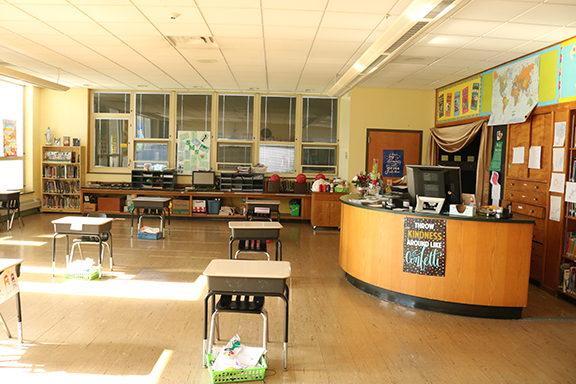
A bright and airy kindergarten room.
The school Thomas McNeill founded was solidly built. Poured terrazzo floors were polished to a high sheen. Blackboard surrounds and hallway railings and trim, like the solid crash-bar doors we passed through daily, were made of hardwood. Tilt-top desks were manufactured by American Seating in Grand Rapids Michigan, the nation’s furniture capital.
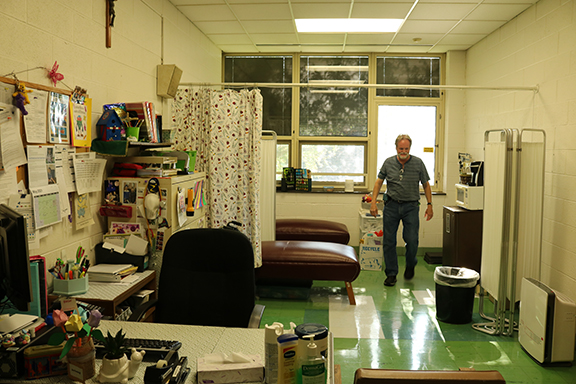
Custodian Pat Sweet showing the Nurse’s Office.
The school had a nurse’s office that was shared with a dental hygenecist. I remember lining up to receive my Saban sugar cube live polio vaccine at school. By 1961 a solid library was underway, and our physical fitness was covered by our splendid new gym, which doubled as a church for Sunday overflow services and as a theater for movies and plays. The school’s only real deficiency was the lack of a cafeteria, which was eventually added. During my time at St. Margaret’s I brown-bagged lunch most days although, because I lived only three blocks away, unlike the kids who were bused I could always walk home for a hot lunch if I didn’t mind sacrificing playground time. The real bonus was I could then watch Jeopardy with my Grandmother.
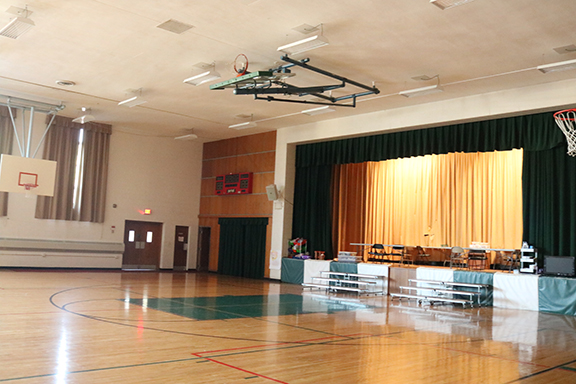
The gymnasium stage was used for plays as well as masses.
My younger brothers and I kept our Mother busy attending PTA meetings for fifteen years at St. M’s, from 1957 until 1972, a long time for her to supply us with white shirts and ties. But school wasn’t the only reason to use the facilities. My brothers and I were members of Boy Scout troops that met in the Church basement every week and, when we entered high school, we still played CYO basketball in the gym two or three nights a week.
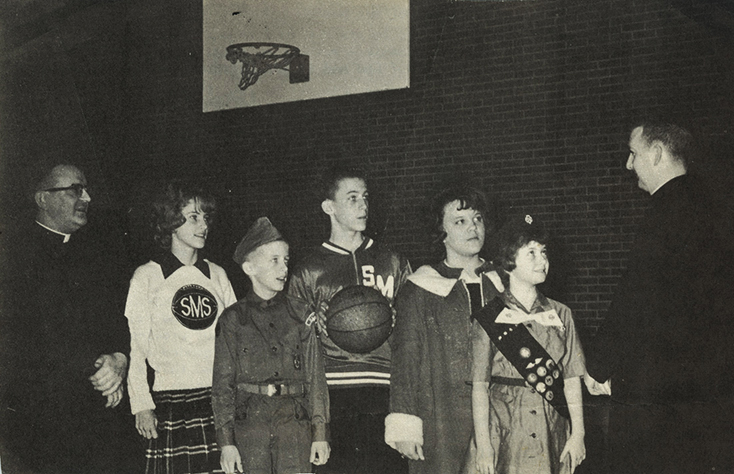
The author posed in his Boy Scout uniform for this promotional photo in 1963. The girl scout, Eileen Flannery, had many more merit badges.
Post boom enrollment began a slow but inevitable decline until, when my nephew Michael attended from 1996 to 2002, there were only 300 students at the school. In 2004 the parish celebrated the school’s 50th anniversary. SMS soldiered on right up to the pandemic, even as the diocese was shuttering other parish schools. The nuns had long since disappeared, but when Covid-19 hit there was still a waiting list for enrollment.
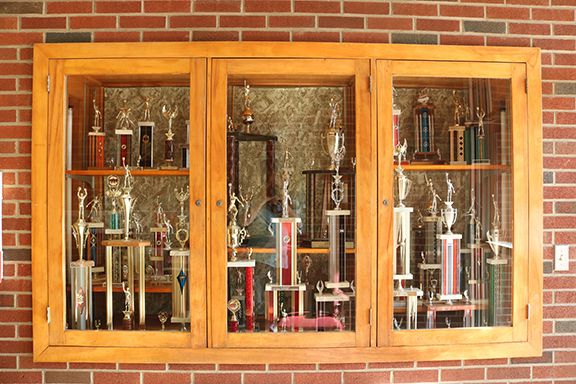
Lockdown spelled disaster for my school. Academic ’20-’21 saw only 77 students enrolled at St. Margaret’s. Parochial education is not free. What cost a few hundred dollars in the 1960s has mushroomed to 1000s today. In affluent communities it is still possible to fill seats in Catholic schools, which are renowned for preparing students for college, but Mattydale New York is not such a town. Today it is a shadow of its former self, a drive-thru crossroads that post-war demographics crashed upon like a tsunami sixty years ago.

Hardwood railings and moldings throughout.
St. Margaret’s announced mid-winter that, after 67 years in operation, spring 2021 would be its final semester. The diocese has decided to combine it with St. Rose of Lima, the next school north and a life-long adversary. What happens to Father McNeill’s well-built facility that saw thousands of kids through their primary and middle school years remains to be seen.
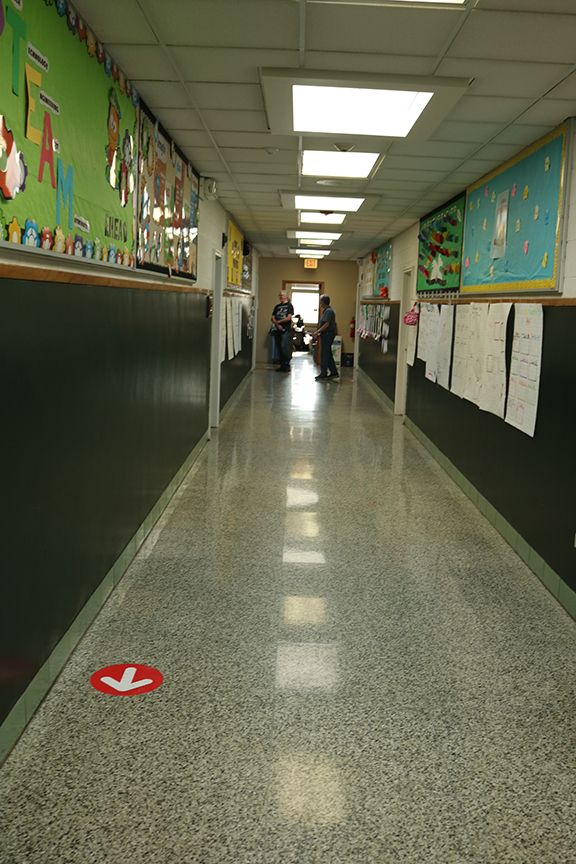
Terrazzo floors made for durable hallways.
My final walk through the school was bitter sweet. As I reflected upon the rooms where I’d had so many formative experiences— here where Sister Trinita made me stand in the waste basket in 1st grade, there where I’d been Lieutenant of safety patrols in Mrs. Maloney’s 6th grade, and again where I’d drawn my own comic books and rented them out for 3¢ per read in Sister Mary Harold’s 8th grade— I thought about what a harsh mistress memory can be. Many of the kids I grew up with have passed on, including Pat Sweet’s sister Cindy, who had been valedictorian of my 8th grade graduating class.
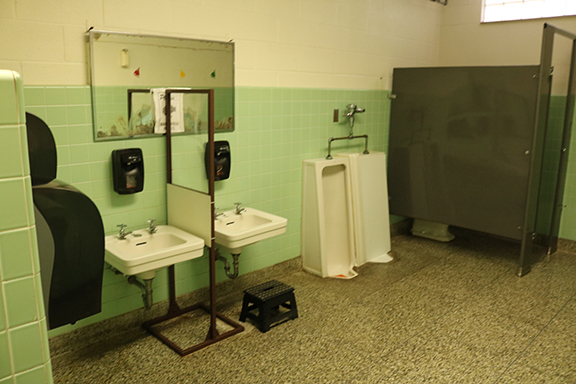
A socially distanced ’50s bathroom.
When I think about it it seems odd to outlive such an institution. Schools are supposed to live quietly in the background while individuals pass on, whether to fame or obscurity. But when I am asked what were the best years of my life I can say, unequivocally, the nine years I spent at St. Margaret’s School. What better place for happiness to occur than during “the wonder years” in the secure bosom of the neighborhood parish school? Such memories live forever.
David Stairs is the founding editor of the Design-Altruism-Project.










